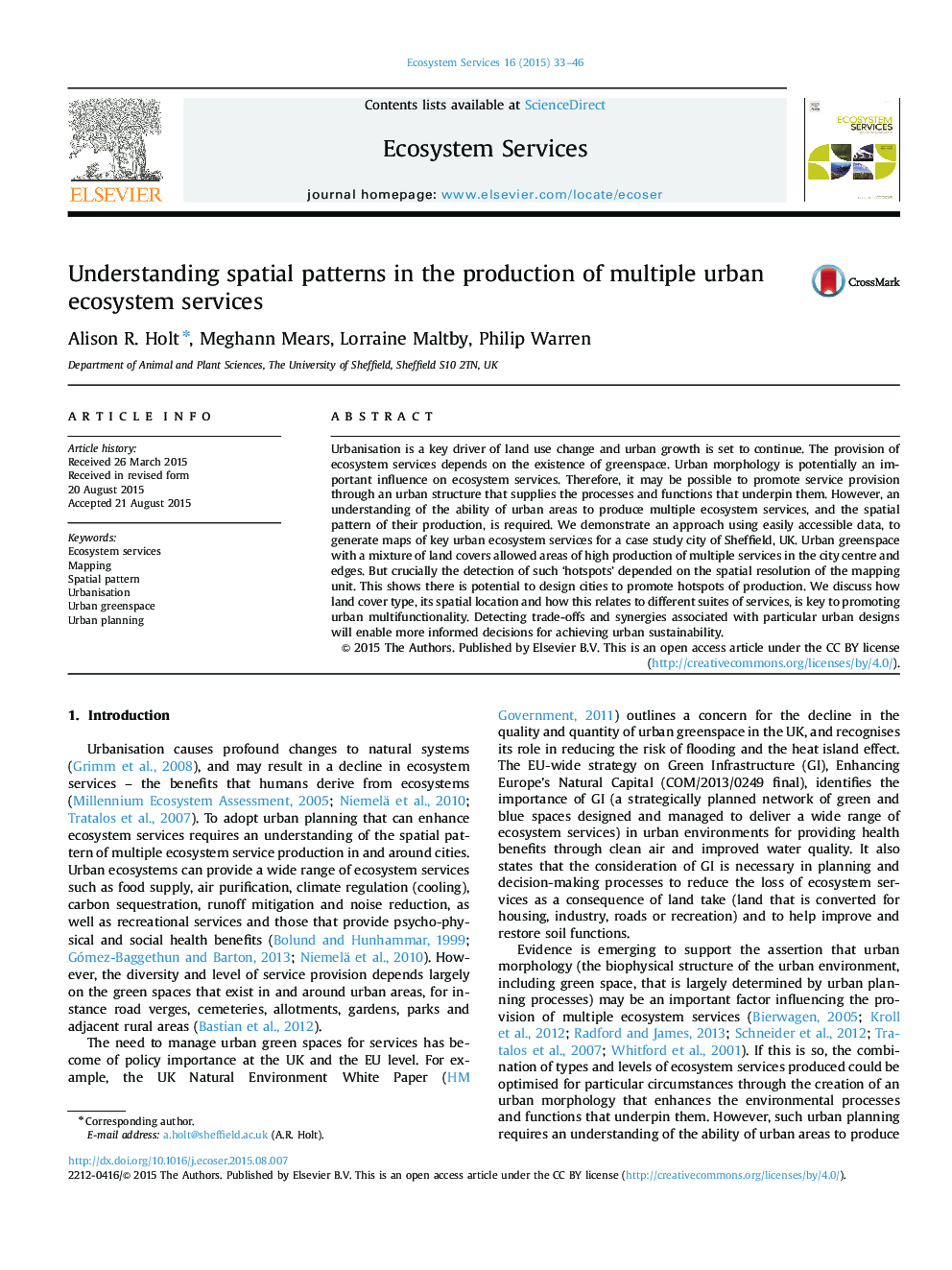| Article ID | Journal | Published Year | Pages | File Type |
|---|---|---|---|---|
| 6556648 | Ecosystem Services | 2015 | 14 Pages |
Abstract
Urbanisation is a key driver of land use change and urban growth is set to continue. The provision of ecosystem services depends on the existence of greenspace. Urban morphology is potentially an important influence on ecosystem services. Therefore, it may be possible to promote service provision through an urban structure that supplies the processes and functions that underpin them. However, an understanding of the ability of urban areas to produce multiple ecosystem services, and the spatial pattern of their production, is required. We demonstrate an approach using easily accessible data, to generate maps of key urban ecosystem services for a case study city of Sheffield, UK. Urban greenspace with a mixture of land covers allowed areas of high production of multiple services in the city centre and edges. But crucially the detection of such 'hotspots' depended on the spatial resolution of the mapping unit. This shows there is potential to design cities to promote hotspots of production. We discuss how land cover type, its spatial location and how this relates to different suites of services, is key to promoting urban multifunctionality. Detecting trade-offs and synergies associated with particular urban designs will enable more informed decisions for achieving urban sustainability.
Related Topics
Life Sciences
Agricultural and Biological Sciences
Agricultural and Biological Sciences (General)
Authors
Alison R. Holt, Meghann Mears, Lorraine Maltby, Philip Warren,
